On the barely one-and-half-kilometre straight road stretch along the flood spill channel connecting Bagh-e-Mehtab with Rawalpora in uptown Srinagar, saner commuters don’t take the straighter route.
The unpaved roadside along the spill channel bank dotted by mulberry trees, is a refugee from the main road dug out in the middle all along last summer for a drainage network, but then left unattended as usually happens in our part of the world.
It is a relief from the crude bumps and potholes on the meager road that literally give a camel ride feeling to motorists even as saving pedestrians from those tragic wheel splashes during rains and billows of dust during dry weather.
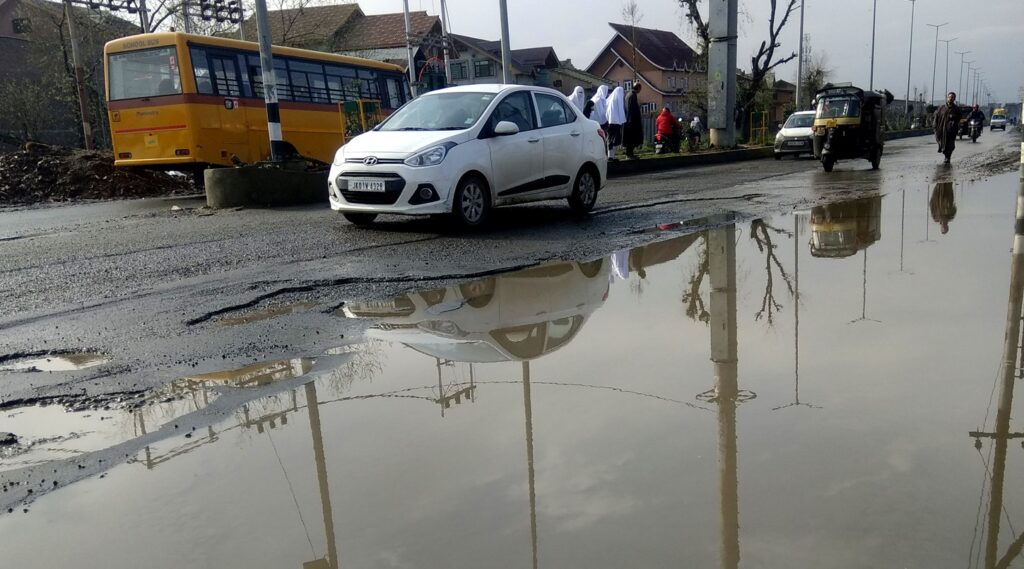
The road stretch is probably a classic example of the broken down and neglected roads across Kashmir division that have lately become a nightmare for commuters to travel on.
Name a route in Kashmir, you will hear the tales of bumpy rides from the commuters with drivers having a tough time in negotiating the frequent impediments.
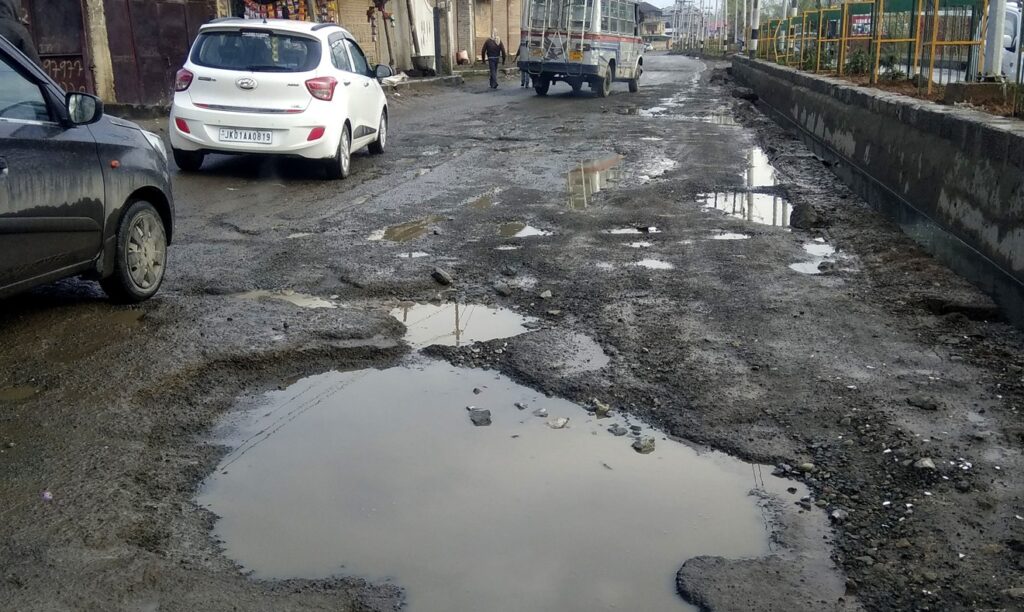
Walking of pedestrians on a road like Srinagar-Chadoora is out of place at least at a few notorious spots where the road surface has acutely broken down.
The stretch from Gopalpora to Kralpora in particular is badly in need of a repair and leads to gridlocks on a daily basis particularly during peak hours.
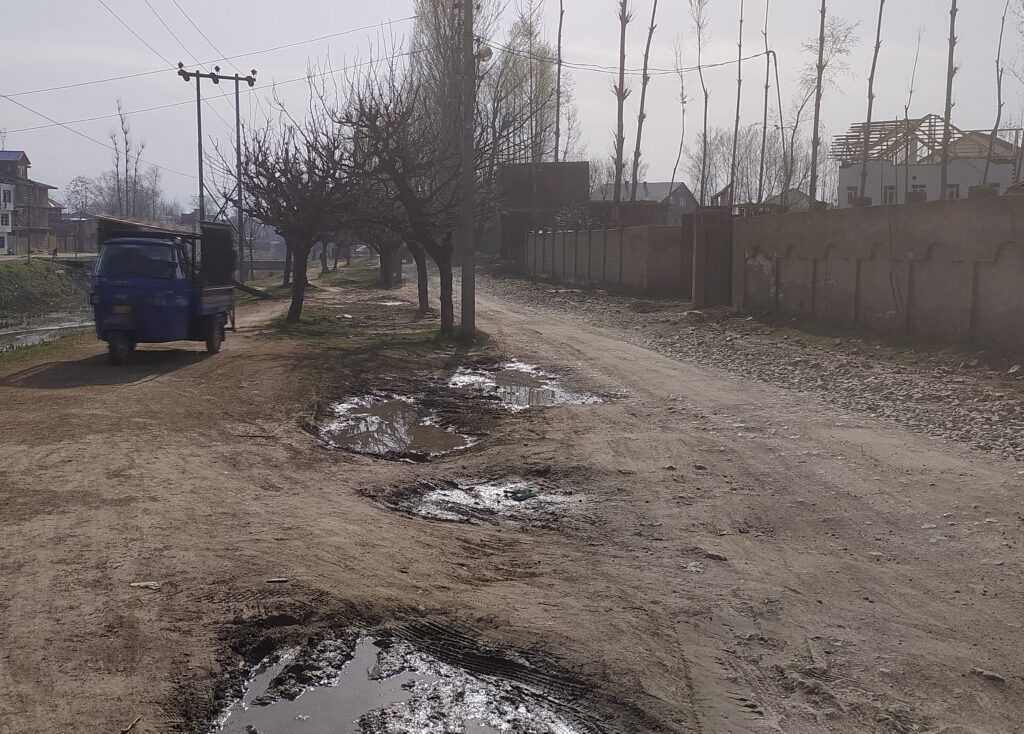
Not to talk of peripheries, even the road network in main city Srinagar too is in shambles including Hazratbal, Natipora in uptown, Bemina-Khumaini Chowk to count a few stretches.
Travelling on the roads has lately become a harrowing experience for commuters especially sick and elderly on a daily basis.
The motorists especially, despite paying hefty sums as road tax while purchasing the vehicles, are now paying through their noses for the maintenance of the vehicles due to the wear and tear caused by the dilapidated roads in the valley.
“We pay a huge amount in the form of nine per cent road tax while purchasing a vehicle, towards the Regional Transport Office (RTO) for better road facility and connectivity, but the government has miserably failed to provide the same,” a car owner from Srinagar city said.
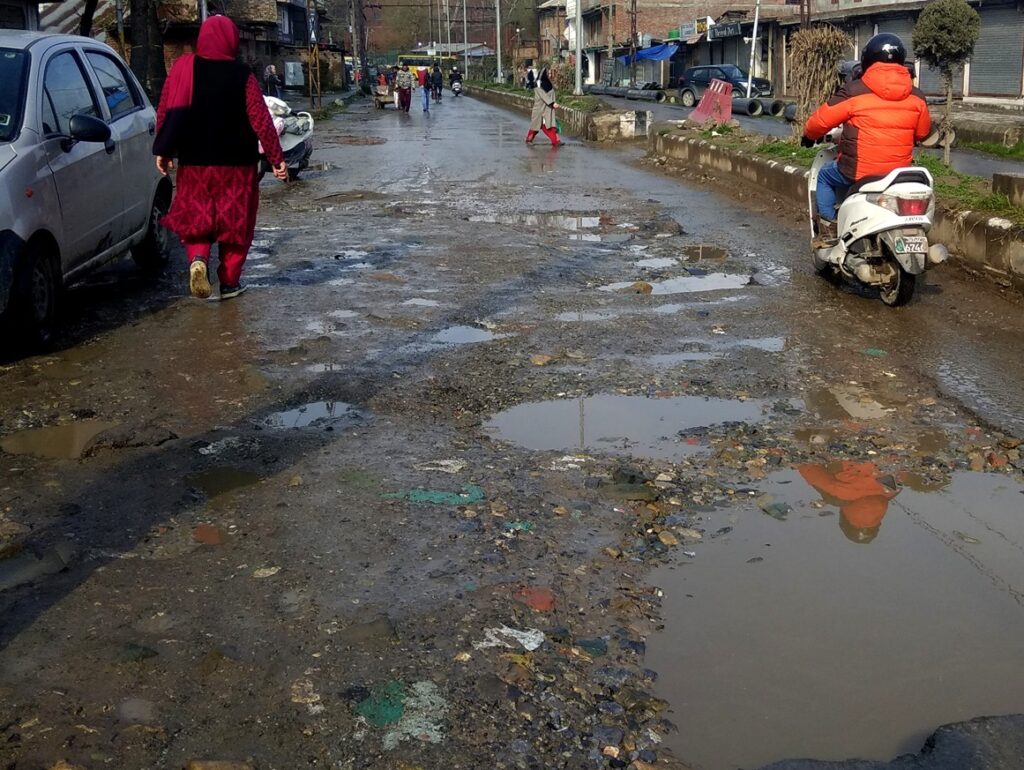
He said the potholed roads across the city had become a source of disappointment on a daily basis for commuters. Even the road length along the flyovers at Jehangir Chowk and Hyderpora that otherwise have been maintained well, are in the worst condition presently much to the commuters’ inconvenience.
Besides the physical inconvenience, the dilapidated roads have also added to the risk of accidents with the drivers almost crashing into the nearby vehicle every time they try to avoid the huge potholes and bumps.
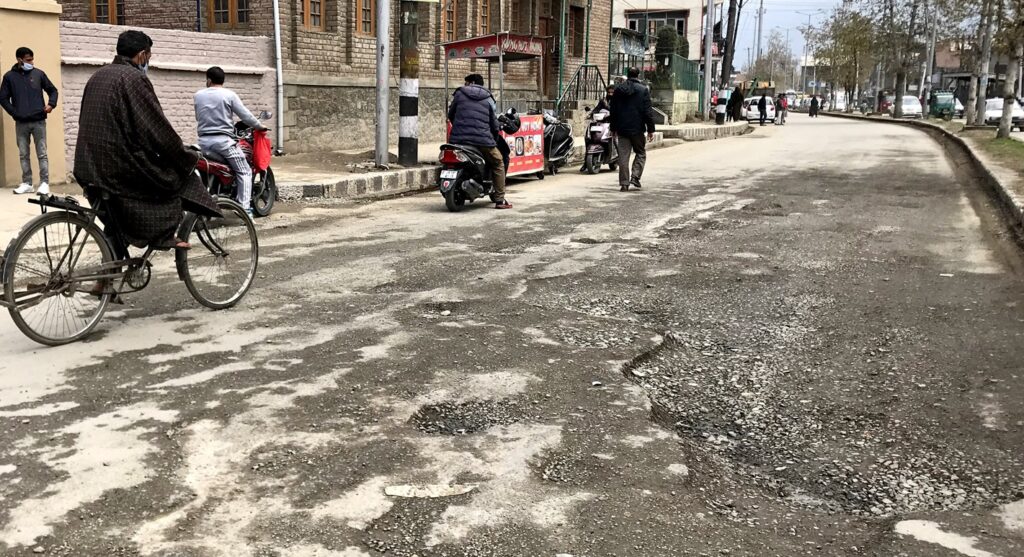
As for the enhanced wear and tear expenses, many workshop owners in Srinagar city said there has been a manifold increase in the number of vehicles coming for maintenance purposes.
“The dilapidated road condition adversely affects the vehicles and causes a considerable damage to the suspension, bearing, bushes, clutch plates and impacts the wheel alignment,” a workshop owner told Greater Kashmir, adding the life of the vehicle too decreases considerably due to the wear and tear.
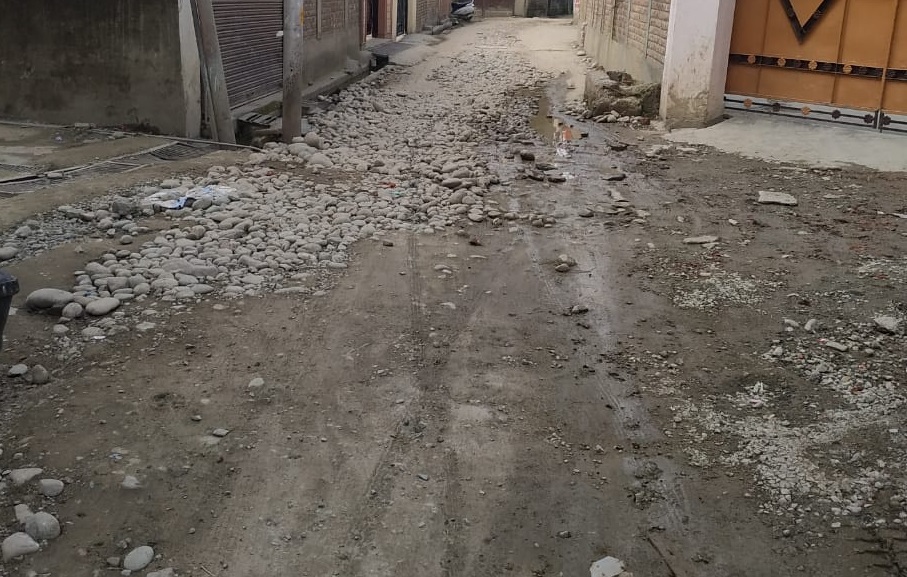
“The frequent halts and using clutch increases petroleum consumption and the owner is at loss on the counts of fuel and wear and tear of the vehicle,” he explained.
Commuters fail to understand as to why the condition of roads in Kashmir worsens with every passing day despite the government allocating crores of rupees for road macadamization.
It is significant to mention here that in July last year, the then J&K LG, Girish Chandra Murmu had reportedly released a whopping amount of Rs 200 crore for macadamization of roads in the union territory.
Chief Engineer Roads & Buildings Kashmir (R&B), Shaukat Jeelani however said that the funds were being released in shifts which subsequently results into the delay in the road repairs even as he also blamed the “inadequate drainage system” as a reason for the dilapidated roads across the valley.
“The accumulation of rainwater or blockade in drainages deteriorates the condition of roads as the water seeps down into the layers of black toppings and weakens the strength of macadamisation, ” Jeelani explained while speaking to Greater Kashmir.
He said the particular road stretches like Boulevard along the Dal Lake which have an adequate drainage system, were intact than the rest.
The R&B Chief Engineer partly blamed the lack of coordination among departments including the Jal Shakti Department wherein the latter digs out roads the R&B macadamizes thereby leading to loss to exchequer besides public inconvenience.
Jeelani however said that they will write to the Jal Shakti higher ups for strengthening the coordination this year. He further informed that out of the 15,000 kilometre road length across Kashmir, only 8,000 kilometres were “100% black topped”.
He said that from February 2020 to February this year, the department blacktopped 814.29 kms which, he said, “is 114.29 kms more than the set target of 700kms”.
The department also did a safety audit of 256 bridges across Kashmir, out of which “only four bridges needed to be completely remodelled, ” Jeelani said. “The remodelling of bridges will be done this year,” he added.
Chief Engineer Jal Shakti Department Kashmir, Iftikhar Ahmad Wani disagreed with Jeelani over the alleged lack of coordination among departments.
“Only in case of emergencies do we undertake repairing work without taking the R&B on board, otherwise we first ask for their consent,” Wani said.
As for the blockage in the drainage system in the city, Commissioner Srinagar Municipal Corporation, Athar Aamir Khan said they were trying to unclog the drains.
Khan further informed that the blockage issues will be mitigated once the ongoing work on Solid Waste Management (SWM) in the city is completed.
The SMC Commissioner said that they are working to come up with a monitoring system wherein all the drainage networks will be monitored on a regular basis.
According to Khan, there is no outfall system for drainages at various places, which also leads to water logging.
The newly appointed SMC Commissioner also urged people he said were the main stakeholders and urged them to avoid littering in open spaces.
Over the alleged lack of coordination between departments, Khan said that there is a “good coordination between the departments, however, we are working to strengthen it more.






